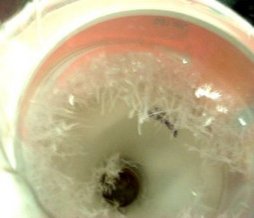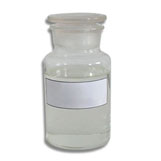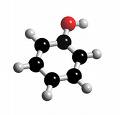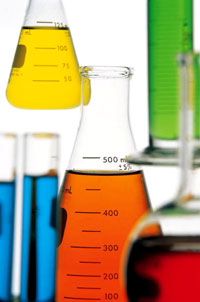What is an Organic Acid?

An organic acid is an organic compound having properties of acids. It is an acid occurring naturally in foods that contain carbon, for example acetic acid, citric acid, fumaric acid, lactic acid, malic acid, etc. Those organic compounds having functional group COOH behave like acids are also thereby termed as organic acids.
What is Organic Compound?
An organic compound is any member of a large class of chemical compounds the molecules of which contain carbon.
What is Acid?
An acid (often represented by the generic formula HA) is traditionally considered any chemical compound that, when dissolved in water, gives a solution with a pH less than 7.0.
 Types of Organic Acids
Types of Organic Acids
Organic acids are of two types:
» COOH group (the carboxyl group)
» Phenol group
Each type appears in salicylic acid (OHC6H4COOH). Water solutions of each type are weakly acidic. Phenol is also known as Carbolic Acid, Benzenol, Phenylic Acid, Hydroxybenzene and Phenic acid.
COOH Group (the carboxyl group) of Organic Acids
- Formic acid
- Acetic acid
- Propionic acid
- Butyric acid
- Valeric acid
- Caproic acid
- Enanthic acid
- Caprylic acid
- Pelargonic acid
- Capric acid
|
 |
- Lauric acid
- Stearic acid
- Acrylic acid
- Fatty acids
- Amino acids
- Keto acids
- Aromatic carboxylic acids
- Dicarboxylic acids
- Tricarboxylic acids
- Alpha hydroxy acids
|
Phenolic Compounds of Organic Acids
» Phenol
» BHT (butylated
hydroxytoluene)
» Bisphenol
» Capsaicin
 » Chavibetol » Chavibetol
» Cresols
» Estradiol/Estrogen
» Eugenol
» Gallic acid
» Guaiacol (2-
methoxyphenol) |
» 4-Nonylphenol
» Orthophenyl phenol
» Picric acid (trinitrophenol)
» Phenolphthalein / phenol red / bromothymol blue /
thymolphthalein / bromophenol blue
» Polyphenols
» Raspberry ketone
» Serotonin / dopamine / adrenaline / noradrenaline
» Thymol (2-Isopropyl-5-methyl phenol)
» Tyrosine
» Xylenols |
Uses of Phenol Group of Organic Acid
 Phenol has antiseptic properties, which was used by Sir Joseph Lister (1827-1912) in his pioneering technique of antiseptic surgery Phenol has antiseptic properties, which was used by Sir Joseph Lister (1827-1912) in his pioneering technique of antiseptic surgery
- It is used as an active ingredient in some oral anesthetics such as Chloraseptic spray
- Phenol was the main ingredient of the Carbolic Smoke Ball, a device sold in London, which protected the user against influenza and other ailments
- It is used in the manufacture of drugs, weedkiller and synthetic resins
- Phenol is used in cosmetic surgery as an exfoliant to remove layers of dead skin
- It is used in phenolization, a surgical procedure used to treat an ingrown nail
|
|
Characteristics of Organic Acid
 Organic acids having 4 to 9 carbon atoms are colourless oily liquids at ordinary room temperatures Organic acids having 4 to 9 carbon atoms are colourless oily liquids at ordinary room temperatures
- Organic acids are weak acids and do not dissociate completely
- Lower molecular weight organic acids can be mixed in water
- Higher molecular weight organic acids are insoluble in molecular form
- Most organic acids are very soluble in organic solvents
- It has variety in the chemical structure
- Several types of toxic effects may occur in organic acids
- Organic acids with 1 to 3 carbon atoms are colorless liquids at ordinary room temperatures. Those with higher molecular weights have a primary irritant effect, the degree determined in part by acid dissociation and water solubility
- Organic acids with 1 to 3 carbon atoms have very pungent smell. The next acids with 4 to 9 carbon atoms smell like goat’s butter. Still higher molecular weighted organic acids are odorless
- The first four carbonic acids are soluble in water. As the molecular weight increases, the solubility in water decreases
- Organic acids like methanoic and ethanoic acids turn blue litmus to red quite easily
- Organic acid reacts with sodium bicarbonate to release water and carbon dioxide.
|
Hazards of Organic Acid

All organic acids except monocarboxylic acids are user-friendly. The low-molecular-weight monocarboxylic acids are primary irritants and cause severe damage to tissues. Strict precautions are necessary in handling this acid. Suitable protective equipment should be available for protection of the skin or eye while one works with this acid. The most important acids of this group are acetic acid and formic acid.
Application of Organic Acid
 Simple organic acids like formic or acetic acid are used for oil and gas cell stimulation treatments Simple organic acids like formic or acetic acid are used for oil and gas cell stimulation treatments
- The conjugate bases of organic acids such as citrate and acetate are often used in biologically-compatible buffer solutions
- Organic acids are valuable platform chemicals for future biorefining applications
- The use of organic acids improves the yield of certain crops
- It is used in nearly every type of chemical manufacture
- Organic acids have wide application in the plastics, tanning, textile, paper, metal, pharmaceutical, food, beverage and cosmetics industries
- They are used in perfumes, herbicides, dyes, lubricants and cleaners
- Organic acids are used in some food items. For example vinegar is dilute acetic acid, which is used in many preparations for pickles, salads, sauces, etc.
- Acetic acid, an organic acid is used for coagulation of latex, which is needed when rubber is made from latex in a rubber manufacturing industry
- Acetic acid is also used for making cellulose acetate, which is an important starting material for making artificial fibers.
|